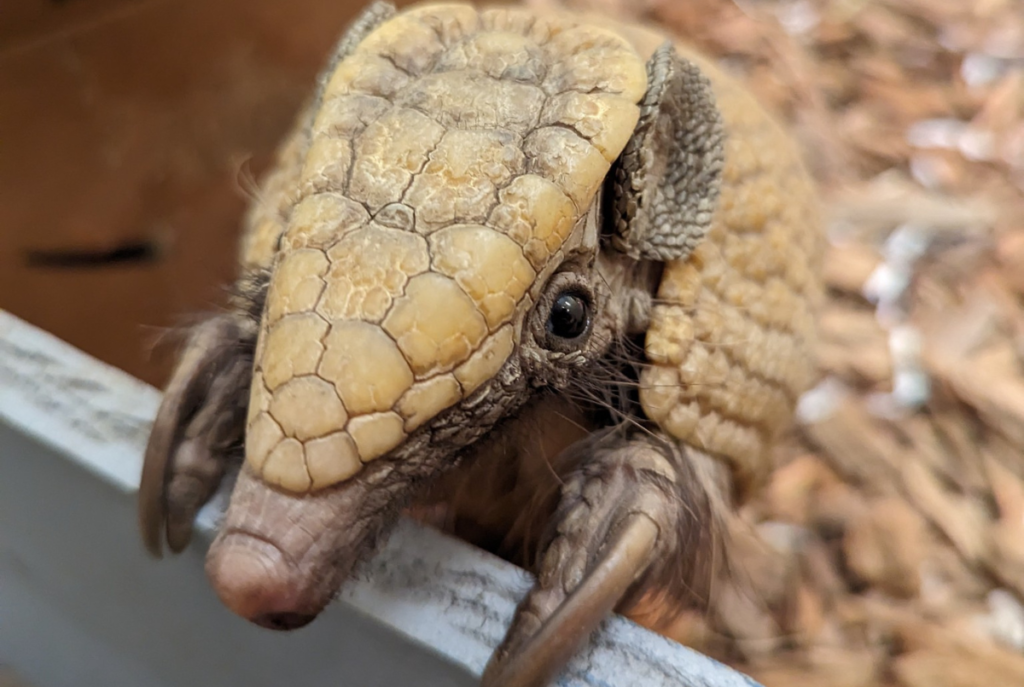Brazilian Three-Banded Armadillo

Basic Information:
Scientific Name: Tolypeutes tricinctus
Habitat: Three-banded armadillos are endemic to the savannahs of northeastern Brazil, just south of the equator.
Diet: Three-banded armadillos are insectivores and primarily eat bugs like ants, termites, and worms.
Size: 1.2 feet long
Weight: 3 pounds
Lifespan: 18.2 years according to AZA Species Survival Statistics
Distribution Map:
I.U.C.N. Conservation Status:

What does this mean?
Vulnerable – a species determined by the International Union for Conservation of Nature (I.U.C.N.) to possess a high risk of extinction as a result of rapid population declines of 30 to more than 50 percent over the previous 10 years (or three generations), a current population size of fewer than 1,000 individuals, or other factors.
Our Three-Banded Armadillo:
Athena (Female) – Born April 12, 2021
About Three-Banded Armadillos:
Like all armadillos, the Three-Banded Armadillo is known for the hard, keratin shell covering its back. However, what makes this specifically Brazilian armadillo unique is that it is 100% capable of rolling up into a ball for protection. Additionally, this armor is looser than most other armadillos which gives them the ability to regulate their temperature more effectively than most other species. They also tend to sleep in undergrowth and buses rather than digging their own burrows. This is partially due to the fact that they do not need to use shelter to protect their softer parts thanks to their shell. In fact, due to their ability to roll up entirely into a shielded ball protects them from almost every potential predator.
Did You Know?!
- Three-banded armadillos are the only type of armadillo that can fully close itself into a ball, the 6-banded and 9-banded armadillos have a slight gap.
- Three-banded armadillos are the size of a golf ball when born, looking like miniature adults by about 3 months.
- Three-banded armadillos have a great sense of smell and can detect a worm up to 8 inches underground, but have rather poor eyesight.
- Three-banded armadillos are threatened in part due to human hunting
- Three-banded armadillos do not dig burrows like most armadillos, but use the abandoned burrows of anteaters when they can get them.
- Three-banded armadillos are crepuscular, being most active at dawn and dusk.
